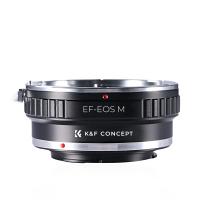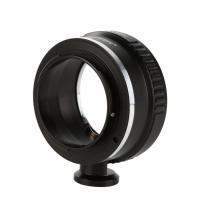What Does Cheese Look Like Under A Microscope ?
Under a microscope, cheese appears as a complex matrix of protein strands, fat globules, and water droplets. The protein strands, primarily made up of casein, form a network that gives cheese its structure. The fat globules are dispersed throughout the protein matrix, and their size and distribution can vary depending on the type of cheese. Water droplets are also present, and their content affects the moisture level of the cheese. Additionally, the presence of bacteria or fungi in certain types of cheese can be observed under a microscope, appearing as colonies or spores. Overall, the microscopic view of cheese provides insight into its composition and the various components that contribute to its texture and flavor.
1、 Microscopic structure of cheese: Cell arrangement, protein matrix, and fat globules.
The microscopic structure of cheese reveals a fascinating arrangement of cells, protein matrix, and fat globules. When observed under a microscope, cheese appears as a complex network of interconnected cells and fibers. The cells are primarily composed of bacteria and yeast, which play a crucial role in the fermentation process that transforms milk into cheese.
The protein matrix in cheese is responsible for its texture and consistency. It consists of casein proteins, which form a network of strands that trap water and fat within the cheese. This protein matrix gives cheese its characteristic firmness and elasticity. The arrangement of the protein matrix can vary depending on the type of cheese, resulting in different textures ranging from soft and creamy to hard and crumbly.
Fat globules are another important component of cheese. These tiny droplets of fat are dispersed throughout the cheese and contribute to its flavor and richness. Under a microscope, fat globules appear as small, spherical structures. The size and distribution of fat globules can vary depending on the type of cheese and the milk used.
Recent advancements in microscopy techniques have allowed for a more detailed understanding of the microscopic structure of cheese. For example, confocal laser scanning microscopy has been used to visualize the three-dimensional arrangement of cells and protein matrix in cheese. This technique has provided insights into the distribution of bacteria and yeast within the cheese, as well as the organization of the protein matrix.
Overall, studying the microscopic structure of cheese provides valuable insights into its composition and properties. It helps us understand the complex interactions between cells, proteins, and fats that give cheese its unique characteristics.

2、 Microbial presence in cheese: Bacteria, yeast, and mold populations.
Microbial presence in cheese is a fascinating subject that has been extensively studied under a microscope. When examining cheese samples, researchers have observed a diverse range of microorganisms, including bacteria, yeast, and mold populations.
Bacteria are the most abundant microorganisms found in cheese. They play a crucial role in the fermentation process, converting lactose into lactic acid, which contributes to the flavor and texture of the cheese. Different types of bacteria can be identified under a microscope, such as Lactococcus, Streptococcus, and Lactobacillus species. These bacteria appear as small, rod-shaped or spherical cells, often forming clusters or chains.
Yeasts are also commonly present in cheese. They are responsible for the production of carbon dioxide and ethanol during fermentation, contributing to the flavor and aroma of the cheese. Yeasts appear as oval or spherical cells under a microscope, often forming colonies or chains. Saccharomyces and Candida species are commonly found in cheese.
Molds are another group of microorganisms that can be observed in cheese samples. They contribute to the development of unique flavors and textures in certain types of cheese. Molds appear as filamentous structures, forming a network of hyphae. Penicillium, Geotrichum, and Aspergillus species are commonly found in cheese.
It is important to note that the microbial composition of cheese can vary depending on factors such as the type of milk used, the production process, and the aging conditions. Additionally, advances in microscopy techniques have allowed for more detailed observations of microbial communities in cheese, providing insights into their interactions and functions.
In conclusion, when examining cheese under a microscope, one can observe a diverse range of microorganisms, including bacteria, yeast, and mold populations. These microorganisms play essential roles in the fermentation and aging processes, contributing to the unique flavors and textures of different types of cheese. Ongoing research continues to deepen our understanding of the microbial presence in cheese and its impact on its quality and characteristics.

3、 Crystal formation in cheese: Calcium lactate, tyrosine, and other crystalline structures.
Cheese, when observed under a microscope, reveals a fascinating world of intricate crystal formations. These crystals are primarily composed of calcium lactate and tyrosine, along with other crystalline structures that contribute to the unique texture and flavor of different cheese varieties.
Calcium lactate crystals are commonly found in aged cheeses. These crystals form as a result of the breakdown of lactose, the sugar present in milk, by lactic acid bacteria during the cheese-making process. The bacteria convert lactose into lactic acid, which then reacts with calcium ions to form calcium lactate crystals. These crystals appear as small, irregularly shaped structures when viewed under a microscope.
Tyrosine crystals, on the other hand, are more commonly found in aged, hard cheeses such as Parmesan or aged cheddar. These crystals are formed from the amino acid tyrosine, which is present in high concentrations in these types of cheeses. As the cheese ages, enzymes break down proteins, releasing tyrosine molecules that subsequently crystallize. Tyrosine crystals are typically larger and more defined than calcium lactate crystals, often appearing as needle-like structures.
In addition to calcium lactate and tyrosine crystals, other crystalline structures may also be present in cheese. These can include various salt crystals, such as sodium chloride, which contribute to the overall flavor profile of the cheese.
It is important to note that the appearance and composition of crystals in cheese can vary depending on factors such as cheese type, aging process, and microbial activity. The latest research in this field continues to explore the formation and impact of these crystals on cheese quality and sensory attributes.

4、 Texture analysis of cheese: Examination of curd formation and protein network.
Texture analysis of cheese involves examining the curd formation and protein network. When cheese is observed under a microscope, it appears as a complex structure with various components. The curd, which is formed during the cheese-making process, consists of aggregated proteins and fats. These curds are responsible for the characteristic texture and appearance of different types of cheese.
Under a microscope, the curd appears as a network of protein strands intertwined with fat globules. The protein network gives cheese its firmness and elasticity, while the fat globules contribute to its creaminess and richness. The size and distribution of these components can vary depending on the type of cheese and the manufacturing process.
Recent advancements in microscopy techniques have allowed for more detailed analysis of cheese texture. For example, confocal laser scanning microscopy can provide three-dimensional images of the cheese structure, allowing researchers to study the arrangement of proteins and fats in greater detail. This has led to a better understanding of how different factors, such as milk composition, processing conditions, and aging, influence the texture of cheese.
Furthermore, researchers have also used scanning electron microscopy to examine the surface of cheese at a higher magnification. This technique reveals the microstructure of the cheese, including the presence of pores, cracks, and other irregularities. These features can affect the texture and mouthfeel of the cheese.
In conclusion, when observed under a microscope, cheese appears as a complex structure with a network of proteins and fat globules. Recent advancements in microscopy techniques have allowed for more detailed analysis of cheese texture, leading to a better understanding of its composition and how it influences the overall sensory experience.





































